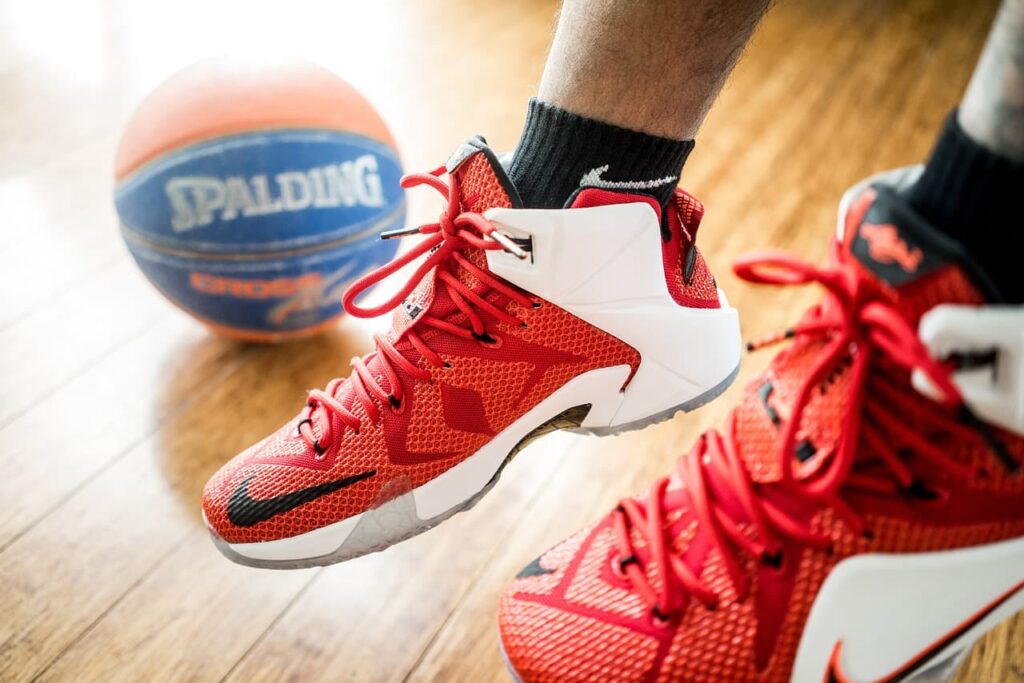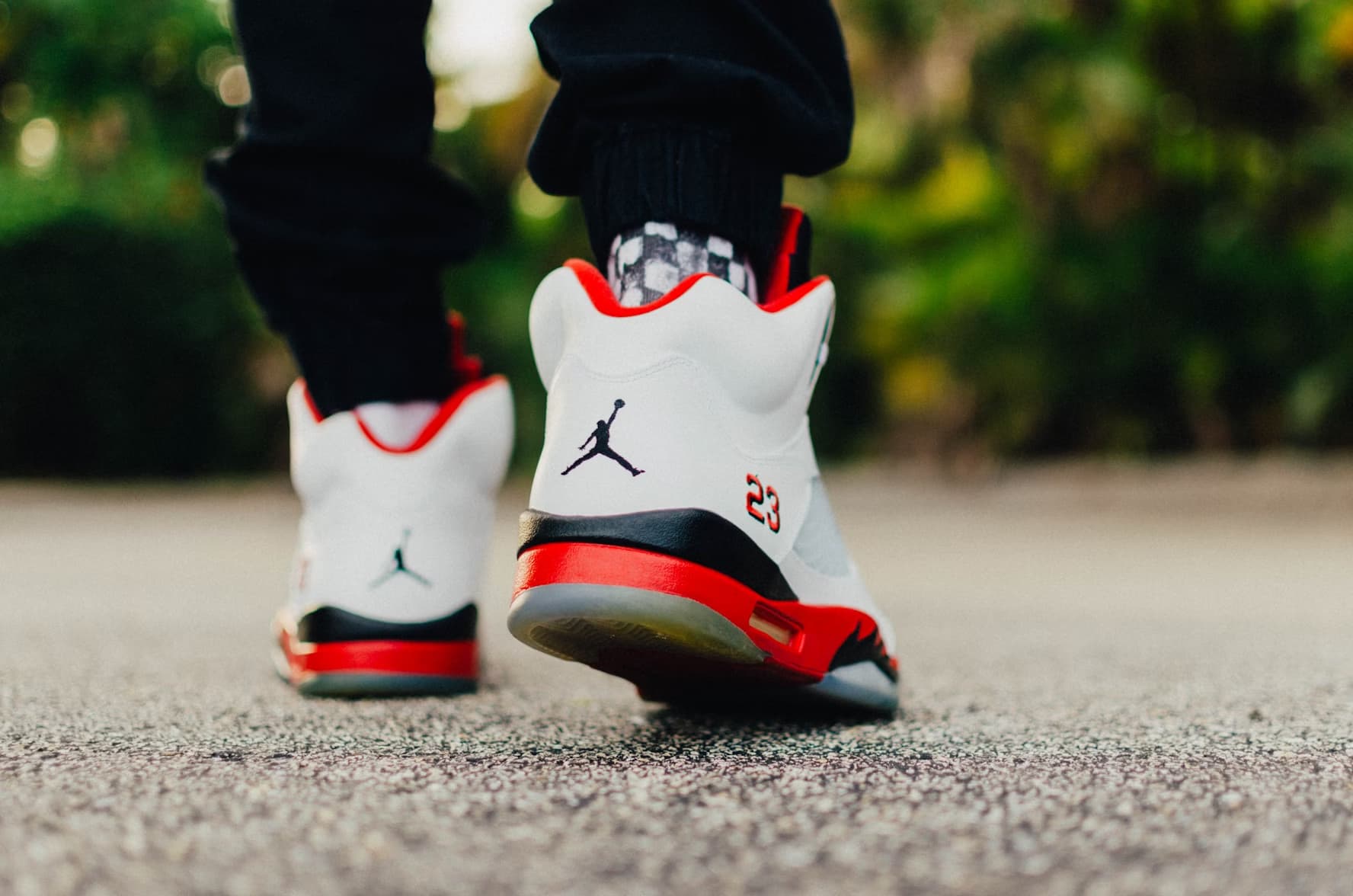Basketball, as a sport, has undergone tremendous change since its inception, and so too has one of its most essential pieces of gear—the basketball shoe. From the basic canvas sneakers of the early days to today’s technologically advanced footwear, basketball shoes have not only influenced the game but have also become a cultural symbol. This article takes a closer look at how basketball shoes have evolved over the decades and what has driven these changes.
The Early Days: Canvas and Simplicity
In the early 20th century, basketball was played in shoes that were a far cry from the sophisticated models we see today. The first widely recognised basketball shoe was the Converse All-Star, introduced in 1917. Made of canvas with a simple rubber sole, the shoe offered minimal support and cushioning. Yet, it was revolutionary for its time, providing a dedicated piece of footwear for a sport that was quickly gaining popularity.
Chuck Taylor, a basketball player and coach, later endorsed the Converse All-Star, adding his name to the shoe and enhancing its reputation. The “Chuck Taylor All-Stars” became synonymous with basketball during the mid-20th century and remained popular for decades, even though they offered little in the way of modern foot support.
The Shift to Leather and Early Innovations
By the 1970s, basketball had become more intense, and players needed better support and cushioning. This led to the use of leather and suede in basketball shoes, offering improved durability and comfort. Brands like Adidas began producing models such as the Adidas Superstar, which featured a leather upper and a rubber shell toe for added protection. This model quickly became popular among professional players and transitioned into street fashion.
The 1970s and 1980s also saw the emergence of other brands entering the basketball scene, such as Nike. The Nike Blazer and later the Nike Air Force 1 were notable for their sleek design and innovative use of materials that provided better grip and comfort. The Air Force 1, in particular, introduced Nike’s air-cushioning technology, which revolutionised athletic footwear by offering enhanced shock absorption.
The Jordan Era: A Cultural Shift
The 1980s and 1990s brought about a seismic shift in the world of basketball footwear with the debut of the Air Jordan line. Introduced in 1985, the Air Jordan 1 was designed for the young NBA star Michael Jordan. This shoe was not just a piece of sports equipment but a cultural phenomenon. The combination of striking design, advanced features, and the charisma of Michael Jordan propelled basketball shoes into mainstream fashion.
The Air Jordan line introduced high-top silhouettes that offered better ankle support, crucial for the fast-paced, high-impact movements in basketball. The use of bold colours and innovative marketing strategies made the shoe a must-have for both athletes and fashion enthusiasts. This era set the stage for basketball shoes to be more than functional; they became a status symbol and a fashion statement.
High-Tech Advancements: Performance Meets Innovation

As basketball grew more competitive, shoe manufacturers continued to innovate. The late 1990s and 2000s saw the introduction of new materials and technologies aimed at enhancing player performance. Lightweight synthetic materials replaced heavier leather, and cushioning systems evolved from simple air pockets to advanced foam technologies.
Nike’s development of the Zoom Air and later Flyknit materials set new standards for lightweight, breathable, and flexible shoes. Meanwhile, other brands like Adidas introduced Boost technology, which provided unparalleled energy return and comfort.
Recent models, such as those from the Kobe Bryant signature series and the LeBron James collection, incorporate multi-layered cushioning, high-traction outsoles, and adaptive fit systems that cater to the specific needs of different playing styles. These advancements highlight how modern basketball shoes aim not only to protect players but also to enhance their on-court performance.
The Role of Technology in Today’s Basketball Shoes
The 2020s have introduced a new era where technology plays a significant role in shoe design. With data-driven insights and biomechanics, shoes are now engineered to cater to the smallest details of player movement. Features like self-lacing mechanisms and real-time feedback systems are no longer science fiction but reality.
Brands are experimenting with smart shoes that can adjust their tightness based on player activity, offering maximum comfort and support. Advanced 3D printing technology allows for customisable designs that fit individual player preferences, offering a blend of form and function like never before.
The Future of Basketball Footwear
As we look ahead, the future of basketball shoes promises even more integration of technology and sustainability. Companies are now focusing on eco-friendly materials and production methods to reduce their environmental impact. Recycled and bio-based materials are becoming more common, reflecting a shift towards more responsible manufacturing practices.
Moreover, advancements in artificial intelligence and wearable technology may soon bring about shoes capable of analysing a player’s performance in real-time, providing feedback to improve their game. The journey of basketball footwear from simple canvas to high-tech marvels is far from over, with each decade bringing new innovations that keep both players and fans eagerly awaiting what comes next.
Basketball shoes have evolved from humble canvas designs to high-tech masterpieces that combine fashion, performance, and technology. This journey showcases how the sport’s demands and cultural trends drive innovation, ensuring that basketball footwear continues to evolve, matching the spirit of the game and the players who wear them.
